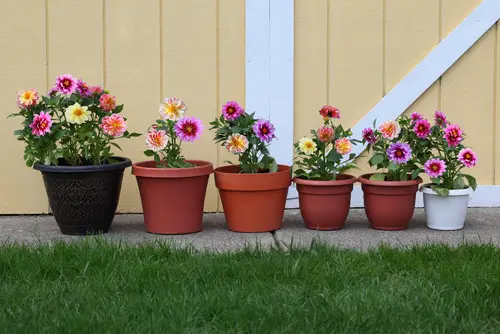Zinnias are a popular garden plant that can add a pop of color to any outdoor space. However, gardeners may notice that their zinnias turning brown and may be wondering why this is happening. There are several reasons why zinnias may be turning brown, ranging from environmental factors to diseases and pests.
Understanding zinnias and their needs is important in preventing brown leaves and blooms. Zinnias require plenty of sunlight, well-draining soil, and regular watering.
Overwatering or underwatering can both lead to brown leaves and blooms, so it’s important to find the right balance. Additionally, zinnias are susceptible to certain diseases and pests that can cause browning.
Understanding Zinnias
Zinnias are beautiful flowering plants that are native to Mexico and Central America. They are a popular choice for gardeners due to their vibrant colors, long blooming period, and ability to attract butterflies and hummingbirds.
Zinnias come in a variety of shapes and sizes, ranging from small, compact plants to tall, bushy ones. They can be grown from seeds or purchased as seedlings from a nursery.
Zinnia plants require full sun and well-draining soil to thrive. They are relatively low-maintenance and can tolerate heat and drought conditions. However, they are susceptible to certain diseases and pests that can cause them to turn brown and die.
One of the most common diseases that affect zinnias is powdery mildew, a fungal infection that appears as a white or gray powder on the leaves, stems, and flowers of the plant. Another disease that can cause zinnias to turn brown is Alternaria leaf spot, which is also a fungal infection.
In addition to diseases, overwatering, pests, nutritional deficiencies, and leaf burn can also cause zinnia leaves to turn brown. It is important to identify the underlying cause of the browning to determine the appropriate treatment.
Zinnias Turning Brown – 5 Common Problems
Zinnias are beautiful flowers that can add vibrant colors to any garden. However, it can be quite frustrating when the flowers start turning brown or dying off. Here are some common reasons why zinnias may be turning brown:
See why your other plants are turning brown and how to fix it:
1. Overwatering
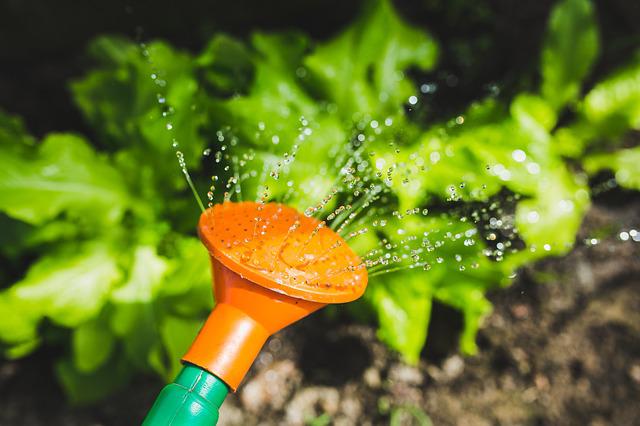
Overwatering is one of the most common reasons for zinnias turning brown. When the soil is waterlogged, it can cause the roots to rot, which can lead to the plant wilting and turning brown. It is important to water zinnias only when the soil is dry to the touch, and to avoid watering them too frequently.
2. Fungal Infection
Fungal infections can also cause zinnias to turn brown. These infections thrive in high humidity and moist environments, so it is important to ensure good air circulation around the plants. Symptoms of a fungal infection can include leaf spots, reddish-brown patches, and black spots on the leaves.
3. Lack of Nutrients
Zinnias require a good balance of nutrients to thrive. If the soil lacks essential nutrients, the plants may start turning brown. It is important to fertilize zinnias regularly with a balanced fertilizer to ensure they have all the nutrients they need.
4. Direct Sunlight
While zinnias require plenty of sunlight to grow, too much direct sunlight can cause the leaves to turn brown and even scorch. It is important to provide some afternoon shade to protect the plants from the hottest part of the day.
5. Frost or Drought Conditions
Zinnias are sensitive to extreme weather conditions, such as frost or drought. When exposed to these conditions, the leaves may start turning brown and the plant may wilt. It is important to protect the plants from frost and to water them regularly during drought conditions.
Zinnia Diseases and Pests
Zinnias are generally hardy and resistant to pests and diseases, but they are still susceptible to a few common issues. Here are some of the most common diseases and pests that affect zinnias:
1. Fungal Diseases
One of the most common fungal diseases that affect zinnias is Alternaria leaf spot. This disease causes brown spots with yellow halos to form on the leaves, which can eventually lead to defoliation. Cercospora leaf spot is another fungal disease that affects zinnias, causing circular brown spots with gray centers to form on the leaves.
To control these diseases, it is important to remove any infected leaves and treat the plants with a fungicide. Neem oil and horticultural oils can also be effective at controlling fungal diseases.
2. Bacterial Diseases
Bacterial leaf spot and bacterial leaf blight are two common bacterial diseases that affect zinnias. These diseases cause brown or black spots to form on the leaves, which can eventually lead to defoliation. They can also cause stunted growth and reduced flower production.
To control these diseases, it is important to remove any infected leaves and treat the plants with a commercially available fungicide.
3. Aphids
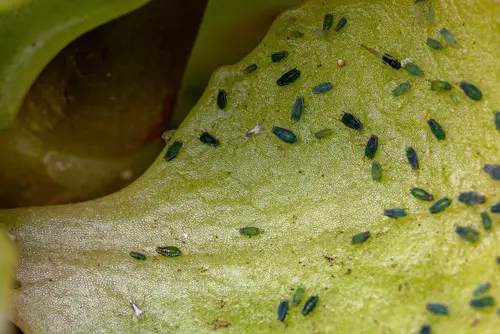
Aphids are a common pest that can damage zinnias by sucking the sap from the leaves and stems. This can cause the leaves to curl and distort, and can also lead to the spread of viral diseases.
To control aphids, it is important to regularly inspect the plants and remove any infested leaves. Ants can also be a sign of an aphid infestation, as they farm the aphids for their honeydew. In this case, it is important to control the ant population as well.
4. Powdery Mildew
Powdery mildew is a fungal disease that affects many plants, including zinnias. It causes a white powdery coating to form on the leaves, which can eventually lead to defoliation.
To control powdery mildew, it is important to remove any infected leaves and treat the plants with a fungicide. Jojoba oil can also be effective at controlling powdery mildew.
5. Aster Yellows
Aster yellows is a disease caused by a phytoplasma that affects many plants, including zinnias. It causes the leaves to turn yellow and become distorted, and can also cause stunted growth and reduced flower production.
Identifying Symptoms of Zinnia Diseases
Zinnias are beautiful annual flowers that come in a wide range of colors. However, they are susceptible to various diseases that can cause the leaves to turn brown and the flowers to droop. Here are some common symptoms of zinnia diseases that gardeners should look out for:
- Brown Spots on Leaves: One of the most common symptoms of zinnia diseases is the appearance of brown spots on the leaves. These spots can be circular or irregular in shape and may have a dark red or purple color. Some of the diseases that can cause brown spots on zinnia leaves include Alternaria leaf spot, bacterial leaf spot, and powdery mildew.
- White Powdery Coating on Leaves: Powdery mildew is a fungal disease that can affect zinnias. The disease appears as a white powdery coating on the leaves, stems, and flowers of the plant. As the disease progresses, the leaves can turn brown and eventually die.
- Leaf Spots: Another common symptom of zinnia diseases is the appearance of leaf spots. These spots can be circular or irregular in shape and may have a brown or black color. Some of the diseases that can cause leaf spots on zinnias include Alternaria leaf spot, bacterial leaf spot, and septoria leaf spot.
- Deadheading: Deadheading is the process of removing spent flowers from a plant. This can help to promote new growth and prevent the spread of diseases. If zinnias are not deadheaded regularly, they can become overcrowded and more susceptible to diseases.
- Fertilizer: Zinnias require regular fertilization to stay healthy and strong. However, too much fertilizer can cause the leaves to turn brown and the flowers to droop. It is important to follow the manufacturer’s instructions when applying fertilizer to zinnias.
- Air Circulation: Zinnias require good air circulation to prevent the spread of diseases. If zinnias are planted too close together, they can become overcrowded and more susceptible to diseases.
- Copper: Copper fungicides can be effective in preventing and treating some zinnia diseases. However, it is important to follow the manufacturer’s instructions when using copper fungicides.
Treatment and Prevention of Zinnia Diseases
When it comes to treating and preventing zinnia diseases, there are several options available. Here are some common treatments and prevention methods:
1. Fungicides
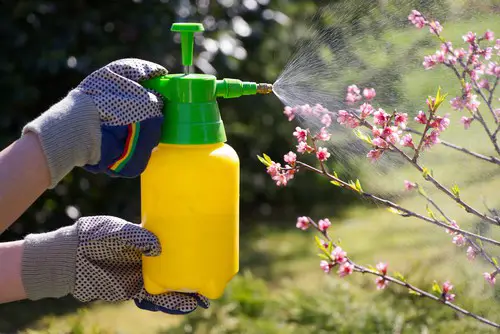
Fungal diseases are a common cause of zinnia browning. Fungicides containing copper or sulfur are effective against powdery mildew and Alternaria leaf spot. Be sure to follow the instructions carefully when applying the fungicide to avoid damaging the plant or surrounding vegetation.
2. Treatment of Phytoplasma
Phytoplasma is a bacterial disease that can cause yellowing and stunted growth in zinnias. Unfortunately, there is no cure for phytoplasma. The best way to prevent the disease is to keep the zinnias healthy and vigorous. This can be achieved by providing adequate water, nutrients, and sunlight.
3. White Powdery Growth
White powdery growth on zinnia leaves can be a sign of powdery mildew, a common fungal disease. To prevent powdery mildew, make sure the zinnias are planted in a location with good air circulation and not too much shade. If powdery mildew does occur, remove the affected leaves and treat the plant with a fungicide.
4. Vigor
Keeping zinnias healthy and vigorous is the best way to prevent disease. This can be achieved by providing the zinnias with adequate water, nutrients, and sunlight. Regular pruning can also help to promote healthy growth.
5. Nutritional Deficiency
Nutritional deficiencies can cause zinnias to turn brown. Make sure the zinnias are planted in nutrient-rich soil and fertilized regularly. If a nutritional deficiency is suspected, a soil test can be performed to determine which nutrients are lacking.
6. Whiteflies
Whiteflies are a common pest that can cause zinnias to turn brown. To prevent whiteflies, keep the zinnias healthy and vigorous. Insecticidal soap can also be used to control whiteflies.
Cultivating Healthy Zinnias
Zinnias are a popular flower among gardeners due to their bright and vibrant colors. However, if zinnias are not properly cared for, they can quickly turn brown and die. Here are some tips for cultivating healthy zinnias:
Choose the Right Cultivar
Zinnias come in a variety of cultivars, each with its own unique characteristics. Some cultivars are more resistant to disease, while others are more tolerant of heat and drought. When choosing a cultivar, it’s important to consider the growing conditions of your zinnia patch and choose a variety that will thrive in those conditions.
Deadhead Regularly
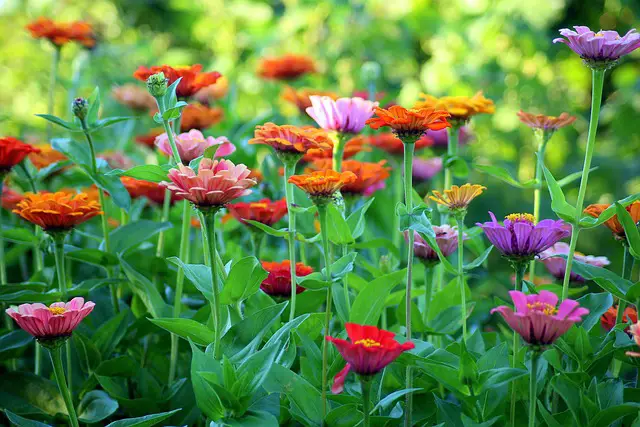
Faded blooms should be removed regularly to promote healthy growth and prevent disease. Deadheading is the process of removing the spent blooms from the plant. This encourages the plant to produce more flowers and prevents the formation of seed heads, which can divert energy from the plant.
Provide Adequate Water and Fertilizer
Zinnias require regular watering to thrive, especially during hot and dry weather. It’s important to water the plants deeply and frequently to keep the soil moist. In addition, zinnias benefit from regular fertilization with a balanced fertilizer to promote healthy growth and vibrant blooms.
Monitor for Pests and Disease
Zinnias are susceptible to a variety of pests and diseases, including powdery mildew and spider mites. Regular monitoring can help catch these issues early and prevent them from spreading. If a problem is detected, it’s important to take action quickly to prevent the spread of disease and damage to the plant.
Frequently Asked Question
What are the signs of overwatering zinnias?
Zinnias are susceptible to root rot, which can be caused by overwatering. Signs of overwatering include yellowing leaves, wilting, and stunted growth. If the soil is constantly wet, it may be a sign that the plant is being overwatered.
How can I prevent zinnia leaves from turning purple?
Zinnia leaves may turn purple due to a phosphorus deficiency. To prevent this, use a balanced fertilizer that includes phosphorus. It is also important to maintain proper soil pH, as a pH that is too low or too high can affect nutrient uptake.
What are some common zinnia problems?
Zinnias are susceptible to several pests and diseases, including powdery mildew, spider mites, and aphids. In addition, zinnias can suffer from nutrient deficiencies, such as iron or phosphorus deficiency.
What is a homemade fungicide for zinnias?
A homemade fungicide for zinnias can be made by mixing 1 tablespoon of baking soda, 1 tablespoon of vegetable oil, and 1 gallon of water. This mixture can be sprayed on the leaves of the plant to prevent fungal diseases.
Why are zinnia stems turning brown?
Zinnia stems may turn brown due to a fungal disease or a lack of water. To prevent fungal diseases, ensure that the plant is not overcrowded and that the soil is well-draining. Water the plant regularly to prevent drought stress.
How can I prevent my zinnias from drooping?
Zinnias may droop due to drought stress or overwatering. To prevent drought stress, water the plant regularly and ensure that the soil is well-draining. To prevent overwatering, allow the soil to dry out slightly before watering again.

Hey, I’m Lisa and I’ve been an avid gardener for over 30 years. I love writing, talking and living in the garden! Feel free to connect with me on my socials below

